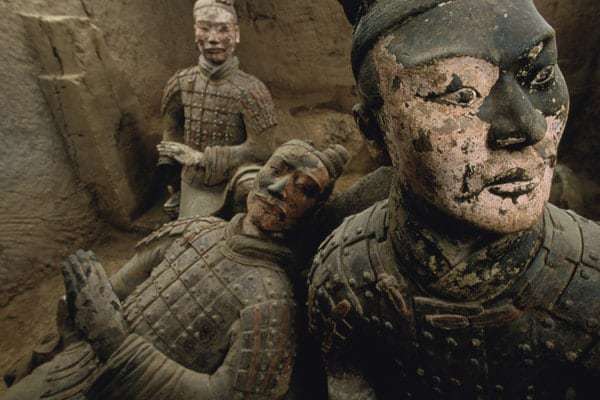The need to safely dispose of the dead is something every human society in history has in common. Whether it be cremation or burial, grand tomb or anonymous pit, everyone is seen off into the great unknown one way or another.
The ways people were laid to rest – whether deliberately or by accident – can offer fascinating insights into the lifestyles and beliefs of societies and individuals. They can also offer up mysteries and conundrums. Here are 5 of the most intriguing.

The Tomb of Qin Shi Huang
Qin Shi Huang was the first Emperor of China. Although he only lived for 49 years, he made every second count. Besides conquering and uniting the six rival states to form the Chinese nation, he founded the Imperial Qin dynasty and built the Great Wall. Even before his 11-year reign as the emperor had begun, Huang had organized the building of his last resting place that was a city in miniature.
When he died September 10, 210 BC, Huang was laid to rest in a three story tomb at the center of a vast mortuary complex. This was discovered in 1974 when peasants accidentally uncovered the life-sized terracotta honor guard Huang took with him into the afterlife: the Terracotta Army. The rest of Huang’s ‘tomb’ still lies buried. But archaeologists using 3D volumetric scans have established that the complex spans 55.25 km or 22 square miles.
In all, 6,000 statues have been discovered. Besides the emperor’s army and their weapons, there are acrobats, chariots, horses, and an orchestra complete with instruments. Scans have established around 600 buildings around the complex, many of them tombs for court officials. At the center of it all lies Huang’s tomb, which in itself is a quarter of the size of The Forbidden City.
So why hasn’t this unique burial site been fully excavated? The cost and problem of conservation is one factor. But the other is the possible lethal consequence for any intrepid tomb raiders. For Huang took very tangible measures to ensure his last rest would be undisturbed. The Chinese historian Sima Qian recorded how Huang’s tomb was protected with lakes of mercury and booby-trapped crossbows. High levels of mercury have been found in the soil surrounding the tomb suggest that this is no mere myth.

